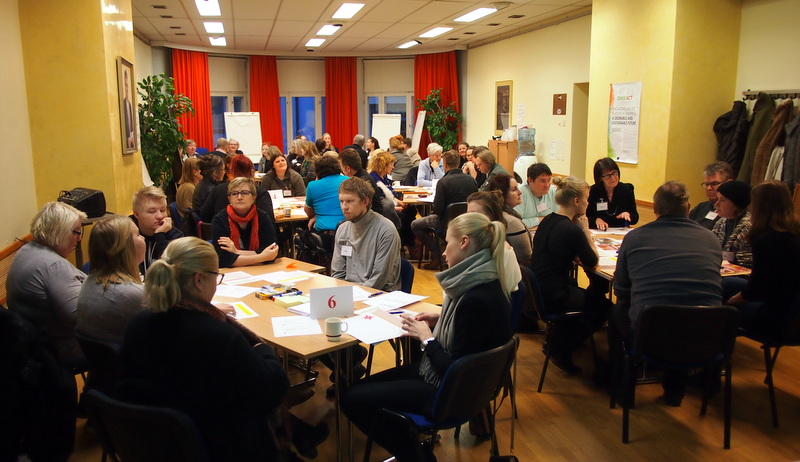Aktiivinen kansalainen haluaa kehittää kykyjään ja sitoutuu todennäköisesti yhteiskunnalliseen vaikuttamiseen. Suora demokratia luo myös yhteenkuuluvuuden tunnetta ja yhteisöllisyyttä, joka voittaa henkilökohtaiset intressit. Vuorovaikutuksessa kansalaisten kanssa päätöksentekoon voidaan tuottaa erilaisia näkökulmia huomioivaa tietoa, keskustelua ja vaihtoehtoisia ratkaisuja.
Vuorovaikutteinen hallinto ilmastokysymyksissä –artikkelissa Irmeli Mustalahti Itä-Suomen yliopistosta, Kaisa Matschoss Helsingin yliopistosta ja ohjelmakoordinaattori Maija Hyle Helsingin Diakonissalaitoksesta korostavat osallistavan ja vuorovaikutteisen luonnonvarahallinnon merkitystä, kun paikalliset ihmiset halutaan vastaamaan ja päättämään oman elinympäristönsä kehittämisestä. Vuorovaikutteisen luonnonvarahallinnon kolmena vahvuutena ja haasteena ilmastokysymyksissä kirjoittajat pitävät paikallistason hyötyjä, hyvän hallinnon tukemista sekä luonnonvarojen hoidon ja suojelun tehostamista.
Koko artikkeli:
Mustalahti, I., Matschoss, K. & Hyle, M. (2015). Vuorovaikutteinen hallinto ilmastokysymyksissä – kansalainen keskiössä. Ympäristöpolitiikan ja -oikeuden vuosikirja VIII 2015, s. 387–403: https://www.researchgate.net/publication/285583714_Vuorovaikutteinen_hallinto_ilmastokysymyksissa_Kansalainen_keskiossa
